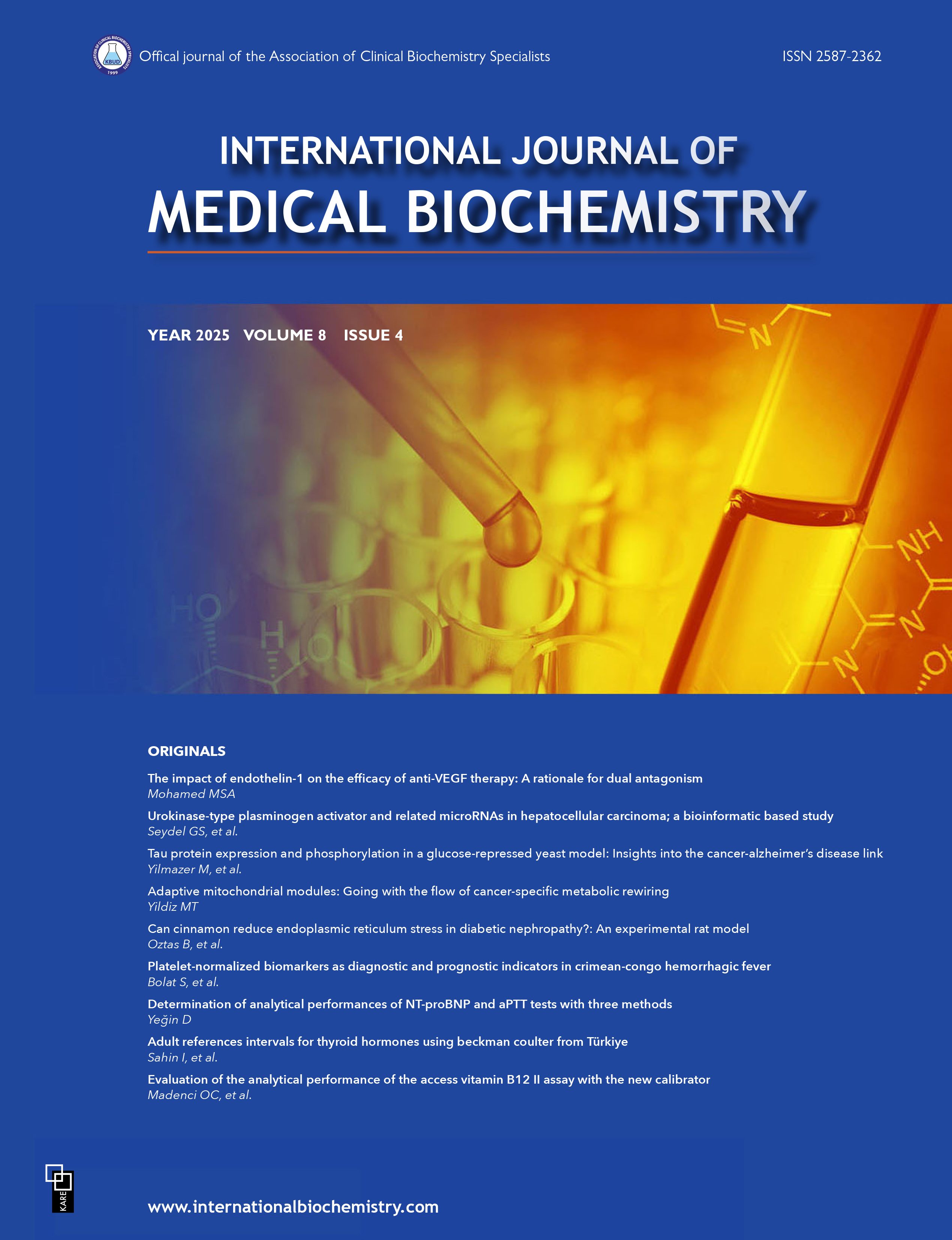Intra-day changes in the levels of biochemistry parameters
Abdullah Arpacı1, Serdar Doğan1, Bahar Ünlü Gül2, Berna Kuş3, Emre Dirican41Department of Medical Biochemistry, Mustafa Kemal University Faculty of Medicine, Hatay, Turkey2Department of Medical Biochemistry, Kars Harakani Public Hospital, Kars, Turkey
3Department of Moleculer Biochemistry and Genetics, Mustafa Kemal University Faculty of Medicine, Hatay, Turkey
4Department of Biostatistics and Medical Informatics, Mustafa Kemal University Faculty of Medicine, Hatay, Turkey
INTRODUCTION: People mostly live in the nonfasting state during a normal 24-h cycle. This study aims to compare the levels of 18 biochemical parameters during different hours of the day.
METHODS: A total of 18 biochemical tests of patients who visited outpatient clinics only once between January 1, 2010, and December 31, 2019, were evaluated at the Hatay Mustafa Kemal University (HMKU) Central Laboratory by using hospital database information. The tests are albumin (Alb), aspartate aminotransaminase (AST), alanine aminotransaminase (ALT), alkaline phosphatase (ALP), amylase, blood urea nitrogen (BUN), calcium (Ca), total cholesterol (TC), creatine kinase (CK), creatinine (Cr), gamma-glutamyltransferase (GGT), glucose, high-density lipoprotein cholesterol (HDL-C), inorganic phosphorus (Pi), iron (Fe), total protein (TP), triglyceride (TG), and lipase. The blood samples of the patient were divided into eight groups according to their collection time as follows: (a) 07: 00-07: 59, (b) 08: 00-08: 59, (c)
09: 00-09: 59, (d) 10: 00-10: 59, (e) 11: 00-11: 59, (f ) 12: 00-13: 59, (g) 14: 00-14: 59, and (h) 15: 00-17: 00.
RESULTS: A statistically significant difference was found between the groups in terms of all parameters except amylase, GGT, and TP (p<0.05). The effect size refers to the minimum amount of difference that is clinically significant. According to the effect size values, there was no significant difference between time groups in the following parameters: Alb, ALT, AST, Pi, Ca, TC, Cr, Fe, glucose, BUN, lipase, TG, ALP, HDL-C, and CK (ʈ<0.30).
DISCUSSION AND CONCLUSION: When considering all of the results, nonfasting screening would not only be acceptable but also make physiologic sense.
Manuscript Language: English







